The NVIDIA GeForce RTX 2080 Ti & RTX 2080 Founders Edition Review: Foundations For A Ray Traced Future
by Nate Oh on September 19, 2018 5:15 PM EST- Posted in
- GPUs
- Raytrace
- GeForce
- NVIDIA
- DirectX Raytracing
- Turing
- GeForce RTX
The RTX Recap: A Brief Overview of the Turing RTX Platform
Overall, NVIDIA’s grand vision for real-time, hybridized raytracing graphics means that they needed to make significant architectural investments into future GPUs. The very nature of the operations required for ray tracing means that they don’t map to traditional SIMT execution especially well, and while this doesn’t preclude GPU raytracing via traditional GPU compute, it does end up doing so relatively inefficiently. Which means that of the many architectural changes in Turing, a lot of them have gone into solving the raytracing problem – some of which exclusively so.
To that end, on the ray tracing front Turing introduces two new kinds of hardware units that were not present on its Pascal predecessor: RT cores and Tensor cores. The former is pretty much exactly what the name says on the tin, with RT cores accelerating the process of tracing rays, and all the new algorithms involved in that. Meanwhile the tensor cores are technically not related to the raytracing process itself, however they play a key part in making raytracing rendering viable, along with powering some other features being rolled out with the GeForce RTX series.
Starting with the RT cores, these are perhaps NVIDIA’s biggest innovation – efficient raytracing is a legitimately hard problem – however for that reason they’re also the piece of the puzzle that NVIDIA likes talking about the least. The company isn’t being entirely mum, thankfully. But we really only have a high level overview of what they do, with the secret sauce being very much secret. How NVIDIA ever solved the coherence problems that dog normal raytracing methods, they aren’t saying.
At a high level then, the RT cores can essentially be considered a fixed-function block that is designed specifically to accelerate Bounding Volume Hierarchy (BVH) searches. BVH is a tree-like structure used to store polygon information for raytracing, and it’s used here because it’s an innately efficient means of testing ray intersection. Specifically, by continuously subdividing a scene through ever-smaller bounding boxes, it becomes possible to identify the polygon(s) a ray intersects with in only a fraction of the time it would take to otherwise test all polygons.
NVIDIA’s RT cores then implement a hyper-optimized version of this process. What precisely that entails is NVIDIA’s secret sauce – in particular the how NVIDIA came to determine the best BVH variation for hardware acceleration – but in the end the RT cores are designed very specifically to accelerate this process. The end product is a collection of two distinct hardware blocks that constantly iterate through bounding box or polygon checks respectively to test intersection, to the tune of billions of rays per second and many times that number in individual tests. All told, NVIDIA claims that the fastest Turing parts, based on the TU102 GPU, can handle upwards of 10 billion ray intersections per second (10 GigaRays/second), ten-times what Pascal can do if it follows the same process using its shaders.
NVIDIA has not disclosed the size of an individual RT core, but they’re thought to be rather large. Turing implements just one RT core per SM, which means that even the massive TU102 GPU in the RTX 2080 Ti only has 72 of the units. Furthermore because the RT cores are part of the SM, they’re tightly couple to the SMs in terms of both performance and core counts. As NVIDIA scales down Turing for smaller GPUs by using a smaller number of SMs, the number of RT cores and resulting raytracing performance scale down with it as well. So NVIDIA always maintains the same ratio of SM resources (though chip designs can very elsewhere).
Along with developing a means to more efficiently test ray intersections, the other part of the formula for raytracing success in NVIDIA’s book is to eliminate as much of that work as possible. NVIDIA’s RT cores are comparatively fast, but even so, ray interaction testing is still moderately expensive. As a result, NVIDIA has turned to their tensor cores to carry them the rest of the way, allowing a moderate number of rays to still be sufficient for high-quality images.
In a nutshell, raytracing normally requires casting many rays from each and every pixel in a screen. This is necessary because it takes a large number of rays per pixel to generate the “clean” look of a fully rendered image. Conversely if you test too few rays, you end up with a “noisy” image where there’s significant discontinuity between pixels because there haven’t been enough rays casted to resolve the finer details. But since NVIDIA can’t actually test that many rays in real time, they’re doing the next-best thing and faking it, using neural networks to clean up an image and make it look more detailed than it actually is (or at least, started out at).
To do this, NVIDIA is tapping their tensor cores. These cores were first introduced in NVIDIA’s server-only Volta architecture, and can be thought of as a CUDA core on steroids. Fundamentally they’re just a much larger collection of ALUs inside a single core, with much of their flexibility stripped away. So instead of getting the highly flexible CUDA core, you end up with a massive matrix multiplication machine that is incredibly optimized for processing thousands of values at once (in what’s called a tensor operation). Turing’s tensor cores, in turn, double down on what Volta started by supporting newer, lower precision methods than the original that in certain cases can deliver even better performance while still offering sufficient accuracy.
As for how this applies to ray tracing, the strength of tensor cores is that tensor operations map extremely well to neural network inferencing. This means that NVIDIA can use the cores to run neural networks which will perform additional rendering tasks. in this case a neural network denoising filter is used to clean up the noisy raytraced image in a fraction of the time (and with a fraction of the resources) it would take to actually test the necessary number of rays.
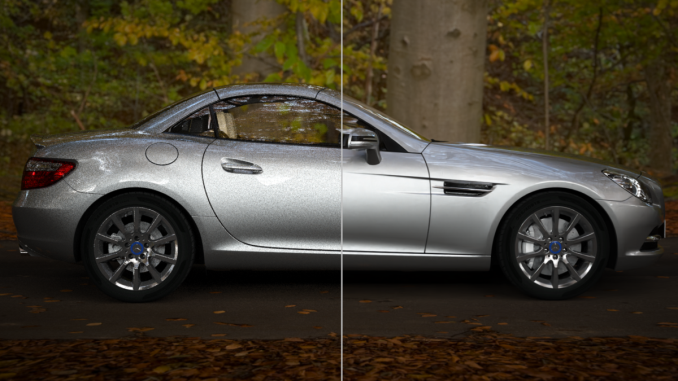
No Denoising vs. Denoising in Raytracing
The denoising filter itself is essentially an image resizing filter on steroids, and can (usually) produce a similar quality image as brute force ray tracing by algorithmically guessing what details should be present among the noise. However getting it to perform well means that it needs to be trained, and thus it’s not a generic solution. Rather developers need to take part in the process, training a neural network based on high quality fully rendered images from their game.
Overall there are 8 tensor cores in every SM, so like the RT cores, they are tightly coupled with NVIDIA’s individual processor blocks. Furthermore this means tensor performance scales down with smaller GPUs (smaller SM counts) very well. So NVIDIA always has the same ratio of tensor cores to RT cores to handle what the RT cores coarsely spit out.
Deep Learning Super Sampling (DLSS)
Now with all of that said, unlike the RT cores, the tensor cores are not fixed function hardware in a traditional sense. They’re quite rigid in their abilities, but they are programmable none the less. And for their part, NVIDIA wants to see just how many different fields/tasks that they can apply their extensive neural network and AI hardware to.
Games of course don’t fall under the umbrella of traditional neural network tasks, as these networks lean towards consuming and analyzing images rather than creating them. None the less, along with denoising the output of their RT cores, NVIDIA’s other big gaming use case for their tensor cores is what they’re calling Deep Learning Super Sampling (DLSS).
DLSS follows the same principle as denoising – how can post-processing be used to clean up an image – but rather than removing noise, it’s about restoring detail. Specifically, how to approximate the image quality benefits of anti-aliasing – itself a roundabout way of rendering at a higher resolution – without the high cost of actually doing the work. When all goes right, according to NVIDIA the result is an image comparable to an anti-aliased image without the high cost.
Under the hood, the way this works is up to the developers, in part because they’re deciding how much work they want to do with regular rendering versus DLSS upscaling. In the standard mode, DLSS renders at a lower input sample count – typically 2x less but may depend on the game – and then infers a result, which at target resolution is similar quality to a Temporal Anti-Aliasing (TAA) result. A DLSS 2X mode exists, where the input is rendered at the final target resolution and then combined with a larger DLSS network. TAA is arguably not a very high bar to set – it’s also a hack of sorts that seeks to avoid doing real overdrawing in favor of post-processing – however NVIDIA is setting out to resolve some of TAA’s traditional inadequacies with DLSS, particularly blurring.
Now it should be noted that DLSS has to be trained per-game; it isn’t a one-size-fits all solution. This is done in order to apply a unique neutral network that’s appropriate for the game at-hand. In this case the neural networks are trained using 64x SSAA images, giving the networks a very high quality baseline to work against.
None the less, of NVIDIA’s two major gaming use cases for the tensor cores, DLSS is by far the more easily implemented. Developers need only to do some basic work to add NVIDIA’s NGX API calls to a game – essentially adding DLSS as a post-processing stage – and NVIDIA will do the rest as far as neural network training is concerned. So DLSS support will be coming out of the gate very quickly, while raytracing (and especially meaningful raytracing) utilization will take much longer.
In sum, then the upcoming game support aligns with the following table.
| Planned NVIDIA Turing Feature Support for Games | |||||
| Game | Real Time Raytracing | Deep Learning Supersampling (DLSS) | Turing Advanced Shading | ||
| Ark: Survival Evolved | Yes | ||||
| Assetto Corsa Competizione | Yes | ||||
| Atomic Heart | Yes | Yes | |||
| Battlefield V | Yes | ||||
| Control | Yes | ||||
| Dauntless | Yes | ||||
| Darksiders III | Yes | ||||
| Deliver Us The Moon: Fortuna | Yes | ||||
| Enlisted | Yes | ||||
| Fear The Wolves | Yes | ||||
| Final Fantasy XV | Yes | ||||
| Fractured Lands | Yes | ||||
| Hellblade: Senua's Sacrifice | Yes | ||||
| Hitman 2 | Yes | ||||
| In Death | Yes | ||||
| Islands of Nyne | Yes | ||||
| Justice | Yes | Yes | |||
| JX3 | Yes | Yes | |||
| KINETIK | Yes | ||||
| MechWarrior 5: Mercenaries | Yes | Yes | |||
| Metro Exodus | Yes | ||||
| Outpost Zero | Yes | ||||
| Overkill's The Walking Dead | Yes | ||||
| PlayerUnknown Battlegrounds | Yes | ||||
| ProjectDH | Yes | ||||
| Remnant: From the Ashes | Yes | ||||
| SCUM | Yes | ||||
| Serious Sam 4: Planet Badass | Yes | ||||
| Shadow of the Tomb Raider | Yes | ||||
| Stormdivers | Yes | ||||
| The Forge Arena | Yes | ||||
| We Happy Few | Yes | ||||
| Wolfenstein II | Yes | ||||


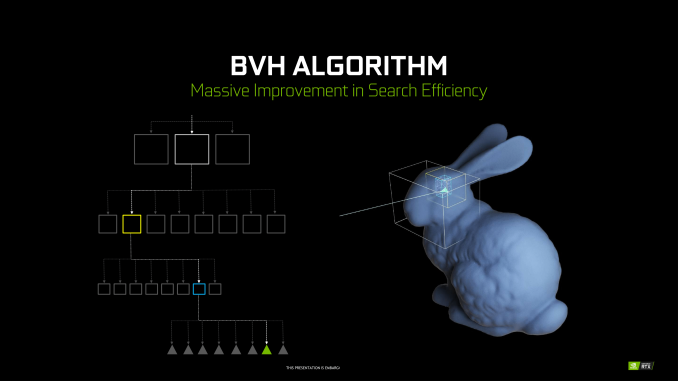
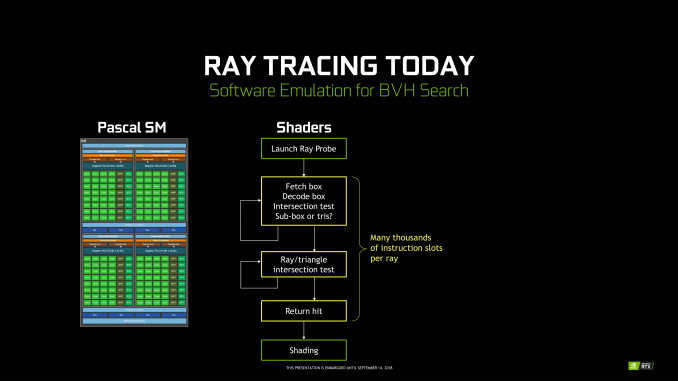
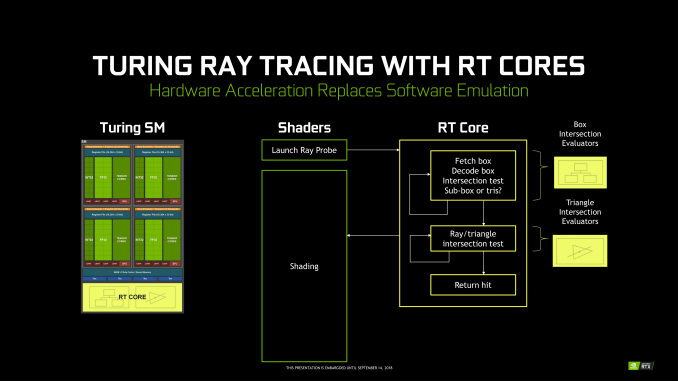
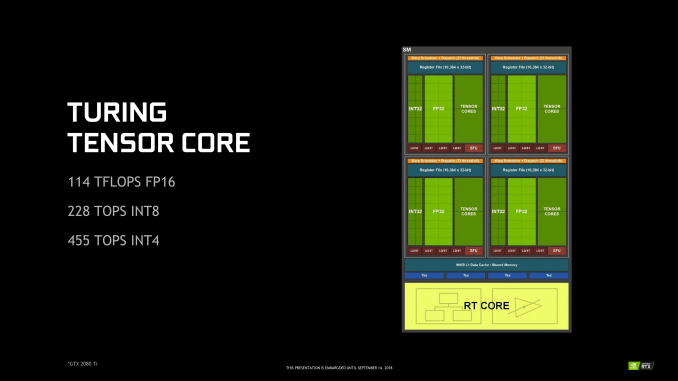
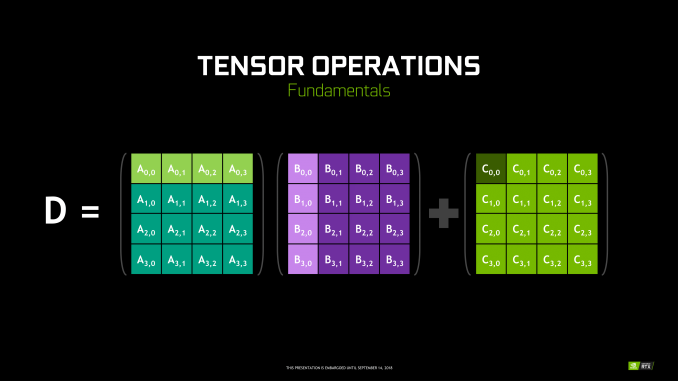
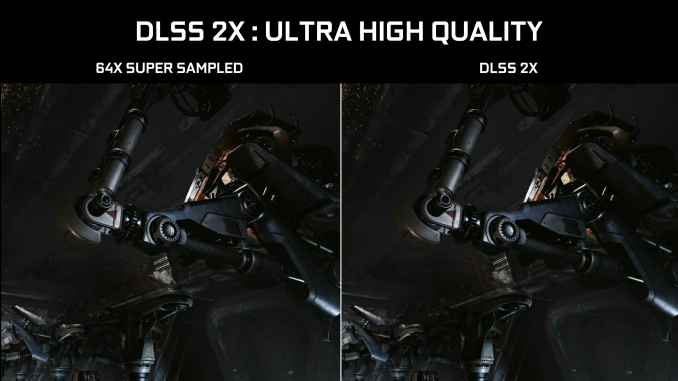








337 Comments
View All Comments
mapesdhs - Thursday, September 27, 2018 - link
It also glosses over the huge pricing differences and the fact that most gamers buy AIB models, not reference cards.noone2 - Thursday, September 20, 2018 - link
Not sure why people are so negative about these and the prices. Sell your old card and amortize the cost over how long you'll keep the new one. So maybe $400/year (less if you keep it longer).If you're a serious gamer, are you really not willing to spend a few hundred dollars per year on your hardware? I mean, the performance is there and it's somewhat future proofed (assuming things take off for RT and DLSS.)
A bowling league (they still have those?) probably costs more per year than this card. If you only play Minecraft I guess you don't need it, but if you want the highest setting in the newest games and potentially the new technology, then I think it's worth it.
milkod2001 - Friday, September 21, 2018 - link
Performance is not there. Around 20% actual performance boost is not very convincing especially due much higher price. How can you be positive about it?Future tech promise doesn't add that much and it is not clear if game developers will bother.
When one spend $1000 of GPU it has to deliver perfect 4k all maxed gaming and NV charges ever more. This is a joke, NV is just testing how much they can squeeze of us until we simply don't buy.
noone2 - Friday, September 21, 2018 - link
The article clearly says that the Ti is 32% better on average.The idea about future tech is you either do it and early adopters pay for it in hopes it catches on, or you never do it and nothing ever improves. Game developers don't really create technology and then ask hardware producers to support it/figure out how to do it. Dice didn't knock on Nvidia's door and pay them to figure out how to do ray tracing in real time.
My point remains though: If this is a favorite hobby/pass-time, then it's a modest price to pay for what will be hundreds of hours of entertainment and the potential that ray tracing and DLSS and whatever else catches on and you get to experience it sooner rather than later. You're saying this card is too expensive, yet I can find console players who think a $600 video game is too expensive too. Different strokes for different folks. $1100 is not terrible value. You talking hundreds of dollars here, not 10s of thousands of dollars. It's drop in the bucket in the scope of life.
mapesdhs - Thursday, September 27, 2018 - link
So Just Buy It then? Do you work for toms? :DTheJian - Thursday, September 20, 2018 - link
"Ultimately, gamers can't be blamed for wanting to game with their cards, and on that level they will have to think long and hard about paying extra to buy graphics hardware that is priced extra with features that aren't yet applicable to real-world gaming, and yet only provides performance comparable to previous generation video cards."So, I guess I can't read charts, because I thought they said 2080ti was massively faster than anything before it. We also KNOW devs will take 40-100% perf improvements seriously (already said such, and NV has 25 games being worked on now coming soon with support for their tech) and will support NV's new tech since they sell massively more cards than AMD.
Even the 2080 vs. 1080 is a great story at 4k as the cards part by quite a margin in most stuff.
IE, battlefield 1, 4k test 2080fe scores 78.9 vs. 56.4 for 1080fe. That's a pretty big win to scoff at calling it comparable is misleading at best correct? Far Cry 5 same story, 57 2080fe, vs. 42 for 1080fe. Again, pretty massive gain for $100. Ashes, 74 to 61fps (2080fe vs. 1080fe). Wolf2 100fps for 2080fe, vs. 60 for 1080fe...LOL. Well, 40% is, uh, "comparable perf"...ROFL. OK, I could go on but whatever dude. Would I buy one if I had a 1080ti, probably not unless I had cash to burn, but for many that usually do buy these things, they just laughed at $100 premiums...ROFL.
Never mind what these cards are doing to the AMD lineup. No reason to lower cards, I'd plop them on top of the old ones too, since they are the only competition. When you're competing with yourself you just do HEDT like stuff, rather than shoving down the old lines. Stack on top for more margin and profits!
$100 for future tech and a modest victory in everything or quite a bit more in some things, seems like a good deal to me for a chip we know is expensive to make (even the small one is Titan size).
Oh, I don't count that fold@home crap, synthetic junk as actual benchmarks because you gain nothing from doing it but a high electric bill (and a hot room). If you can't make money from it, or play it for fun (game), it isn't worth benchmarking something that means nothing. How fast can you spit in the wind 100 times. Umm, who cares. Right. Same story with synthetics.
mapesdhs - Thursday, September 27, 2018 - link
It's future tech that cannot deliver *now*, so what's the point? The performance just isn't there, and it's a pretty poor implementation of what they're boasting about anyway (I thought the demos looked generally awful, though visual realism is less something I care about now anyway, games need to better in other ways). Fact is, the 2080 is quite a bit more expensive than a new 1080 Ti for a card with less RAM and no guarantee these supposed fancy features are going to go anywhere anyway. The 2080 Ti is even worse; it has the speed in some cases, but the price completely spoils the picture, where I am the 2080 Ti is twice the cost of a 1080 Ti, with no VRAM increase either.NVIDIA spent the last 5 years pushing gamers into high frequency displays, 4K and VR. Now they're trying to do a total about face. It won't work.
lenghui - Thursday, September 20, 2018 - link
Thanks for rushing the review out. BTW, the auto-play video on every AT page has got to stop. You are turning into Tom's Hardware.milkod2001 - Friday, September 21, 2018 - link
They are both owned by Purch. Marketing company responsible for those annoying auto play videos and the lowest crap possible From the web section. They go with motto: Ad clicks over anything. Don't think it will change anytime soon. Anand sold his soul twice to Apple and also his web to Purch.mapesdhs - Thursday, September 27, 2018 - link
One can use Ublock Origin to prevent those jw-player vids.